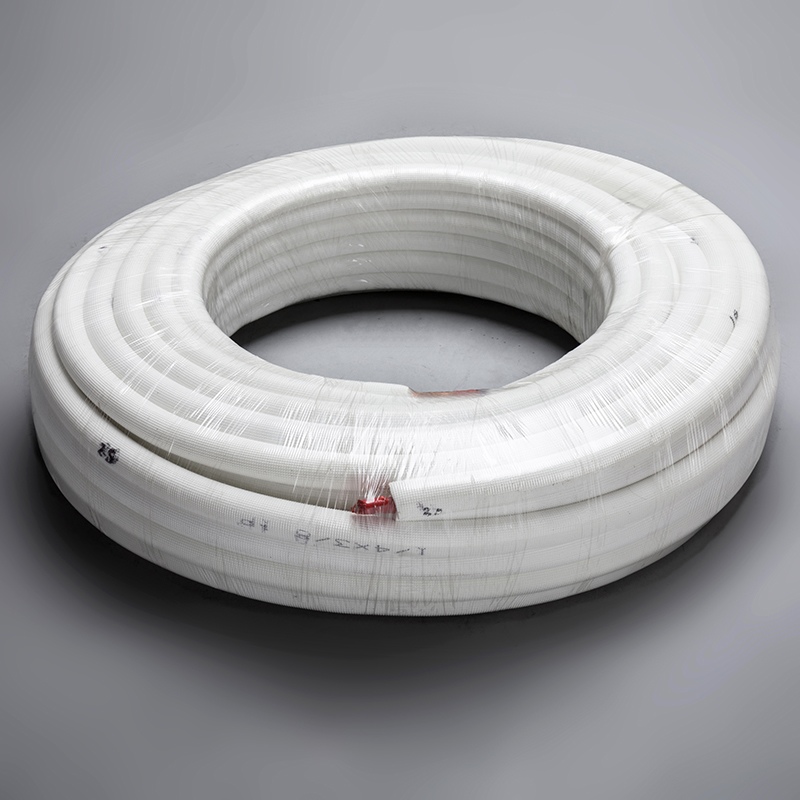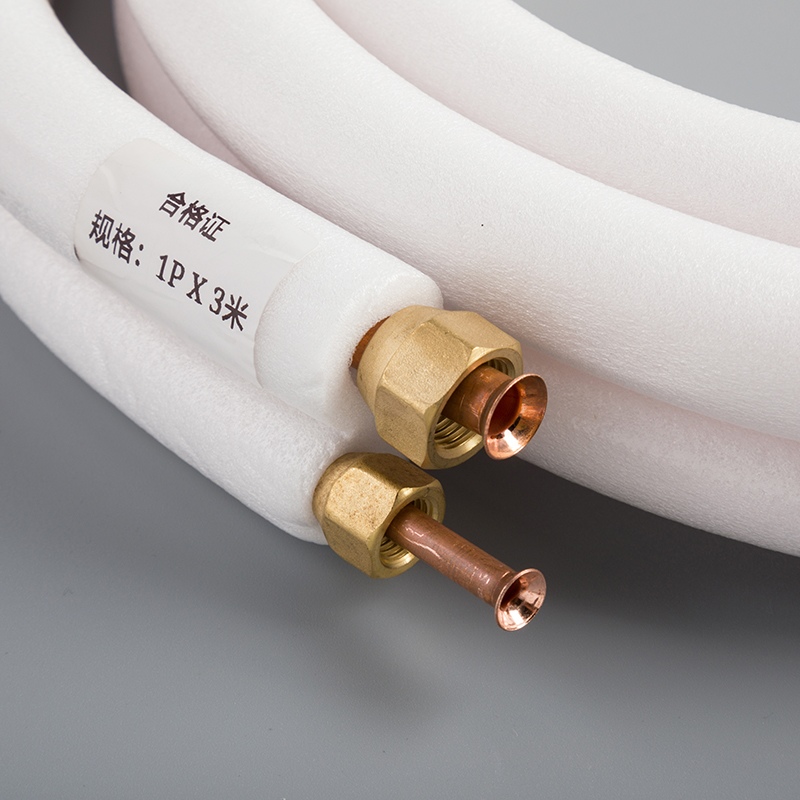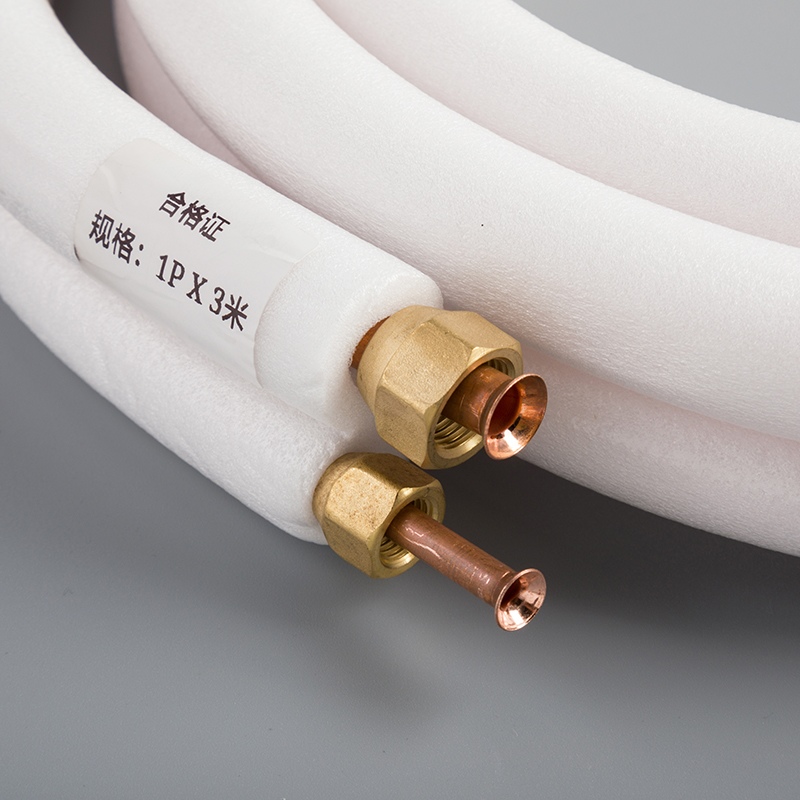Top Tips for Maintaining Your AC Copper Pipes

Write a 'Tips' blog post on Maintaining Air Conditioning Copper Pipes. Copper tubing plays a vital role in the efficiency and longevity of air conditioning systems. Maintaining Air Conditioning Copper Pipes is crucial for extending equipment lifespans, reducing maintenance costs, and promoting sustainable practices. With its resistance to corrosion and degradation, copper tubing ensures optimal heat exchange during the cooling process, enhancing overall system performance. Choosing copper pipes contributes to energy efficiency in air conditioning systems.
Understanding AC Copper Pipes
Types of Copper Pipes
Type K Copper Pipes
Type K copper pipes have the thickest wall among common types. They are primarily used for water distribution, fire protection, oil, HVAC, and various construction applications. Available in both rigid and flexible forms, Type K pipes can be utilized with flared and compression fittings. These pipes are recommended for main water lines and underground installations due to their thickness, which enables them to withstand pressure from backfilled earth in trenches.
Type L Copper Pipes
Type L copper pipes are commonly used for interior plumbing, fire protection, and certain HVAC applications. They come in rigid and flexible forms and are compatible with sweat, compression, and flare fittings. Considered the most versatile type of copper piping, Type L is suitable for a wide range of applications compared to other types. While flexible Type L copper is ideal for repairing or replacing old water lines, rigid tubing offers enhanced durability. Moreover, Type L pipes can also be installed outside the home where direct exposure is expected.
Type M Copper Pipes
Type M copper pipes feature a thinner wall compared to both Type K and Type L copper pipes. These pipes are typically used for domestic water service and vacuum systems. Available in rigid and flexible forms like the other types, Type M is often preferred for residential projects due to its relatively lower price point resulting from its thinner wall construction. However, it's important to note that some plumbing codes restrict the use of Type M copper in certain areas and applications. It's advisable to consult local building authorities regarding any limitations on its usage.
Installation of AC Copper Pipes

Pre-Installation Checks
Inspecting the Pipes
Examine the copper pipes thoroughly for any signs of damage or corrosion.
Look for dents, bends, or discoloration that may indicate potential issues.
Ensure that the pipes are free from any debris or blockages that could affect their performance.
Measuring and Cutting
Measure the copper pipes accurately to ensure they fit the installation requirements precisely.
Use appropriate tools such as a pipe cutter to cut the pipes to the correct length.
Double-check the measurements before cutting to avoid any errors in sizing.
Installation Process
Fitting the Pipes
Connect the copper pipes securely using fittings that match the pipe size and type.
Apply flux and solder to create strong and leak-proof joints between sections of piping.
Verify that all connections are tight and properly sealed to prevent leaks.
Sealing and Insulating
Seal any gaps or openings in the installation with suitable sealants to prevent air or moisture infiltration.
Insulate the copper pipes with foam insulation sleeves to improve energy efficiency and protect against condensation.
Ensure that all exposed areas of piping are adequately insulated to maintain optimal performance.
By following these pre-installation checks and proper installation procedures, you can ensure a reliable and efficient AC copper pipe system for your air conditioning needs. Proper fitting, sealing, and insulation are essential steps in maximizing the longevity and effectiveness of your copper piping setup in HVAC systems.
Maintenance Tips for AC Copper Pipes

Regular Inspections
To ensure the longevity of Maintaining Air Conditioning Copper Pipes, regular inspections are crucial. Checking for leaks and inspecting insulation are essential steps in preventing potential issues that could affect the performance of the system.
When checking for leaks, visually inspect all connections and joints along the copper pipes. Look for any signs of moisture or water accumulation that may indicate a leak.
Inspecting insulation involves examining the foam sleeves covering the pipes. Make sure there are no tears or gaps in the insulation that could lead to energy loss or condensation buildup.
Cleaning the Pipes
Cleaning Maintaining Air Conditioning Copper Pipes is an important maintenance task that helps maintain optimal performance. Using appropriate cleaning agents and flushing the system regularly can prevent blockages and ensure efficient heat exchange.
Utilize mild cleaning agents specifically designed for copper pipes to remove any dirt or debris that may have accumulated inside.
Flushing the system involves running a cleaning solution through the pipes to eliminate any buildup or impurities that could hinder proper airflow.
Preventive Measures
Taking preventive measures is key to Maintaining Air Conditioning Copper Pipes effectively. Protecting them from corrosion and avoiding physical damage can significantly extend their lifespan and enhance overall system efficiency.
Apply a protective coating to the exterior of the copper pipes to shield them from environmental factors that may cause corrosion over time.
Avoid physical damage by ensuring that the pipes are securely fastened and protected from accidental impact or bending.
Expert Testimony:
Various Experts suggest that copper pipes are integral to air conditioning systems due to their durability, corrosion resistance, and efficient heat transfer properties. Proper maintenance, such as regular inspections, cleaning, and preventive measures, is essential for maximizing their benefits in HVAC applications.
Troubleshooting Common Issues
Identifying Problems
Signs of Leaks
Look for any visible water stains or wet spots near the copper pipes, indicating a potential leak.
Check for a decrease in the refrigerant levels, as this could be a sign of leakage within the system.
Pay attention to any hissing sounds coming from the pipes, which may suggest a leak under pressure.
Reduced Efficiency
Monitor the cooling performance of your air conditioning system; a decrease in efficiency could signal issues with the copper pipes.
Keep an eye on your energy bills; a sudden increase in energy consumption without changes in usage patterns might indicate reduced efficiency.
If you notice inconsistent cooling throughout your space, it could be due to compromised copper piping affecting heat exchange.
Solutions and Repairs
Fixing Leaks
Identify the exact location of the leak by conducting a thorough visual inspection along the length of the copper pipes.
Use a suitable repair kit designed for fixing leaks in copper tubing to seal any identified leaks effectively.
Once repaired, perform pressure tests to ensure that the leaks have been successfully addressed.
Replacing Damaged Sections
Determine the extent of damage to the copper pipes and assess whether repairs are feasible or if replacement is necessary.
Cut out the damaged section using a pipe cutter and remove it carefully from the system.
Install a new section of copper piping, ensuring proper fitting and sealing to restore optimal functionality.
Expert Testimony:
Baoyuan: Understanding the impact of copper tubing is crucial for maximizing efficiency, assessing environmental repercussions, and exploring future developments.
Copper tubing plays a significant role in maintaining efficient air conditioning systems; hence, promptly addressing common issues such as leaks and reduced efficiency is essential for optimal performance and longevity. By identifying problems early on and implementing appropriate solutions, you can ensure that your AC copper pipes continue to function effectively while maximizing energy efficiency and cost-effectiveness in HVAC applications.
To ensure the longevity of Maintaining Air Conditioning Copper Pipes, consistent care is paramount. Regular inspections help detect issues early, preventing costly repairs. Cleaning the pipes with suitable agents maintains efficiency and prevents blockages. Embrace preventive measures like protecting from corrosion to extend their lifespan. Remember, diligence in maintenance guarantees optimal performance and cost-effectiveness for your HVAC system.
See Also
Essential Maintenance Tips for Copper Tubing Coils
The Ultimate Copper Pipe Efficiency Maintenance Guide
Money-Saving Strategies for AC Copper Tubing Expenses


